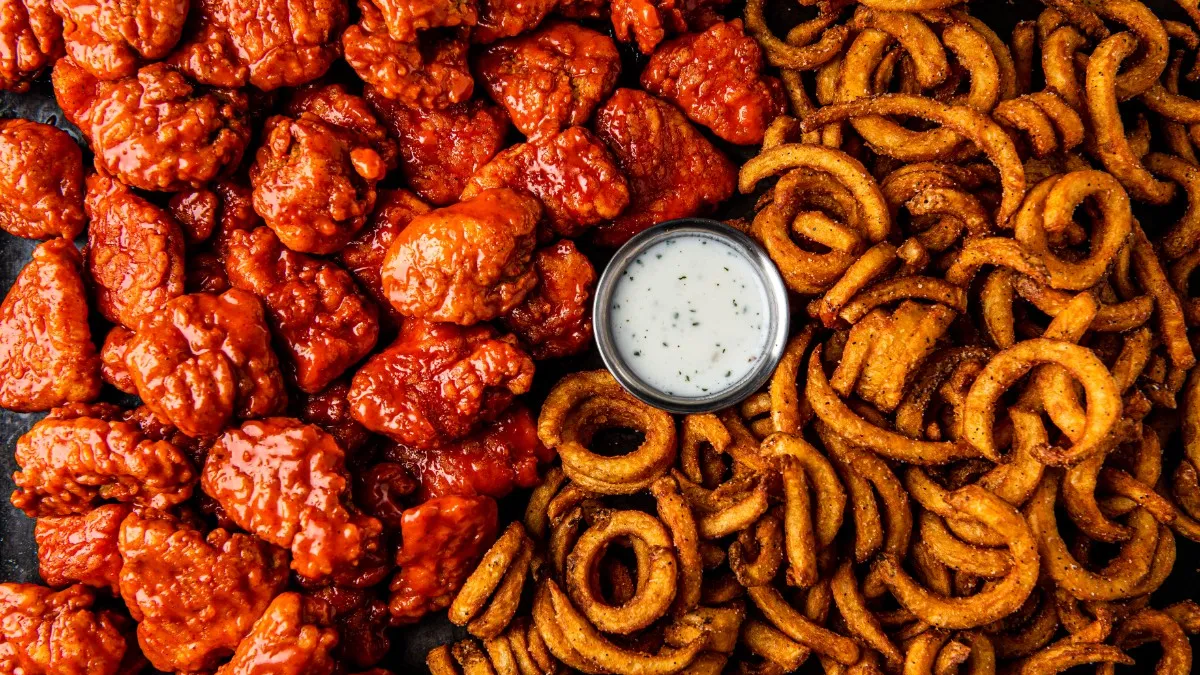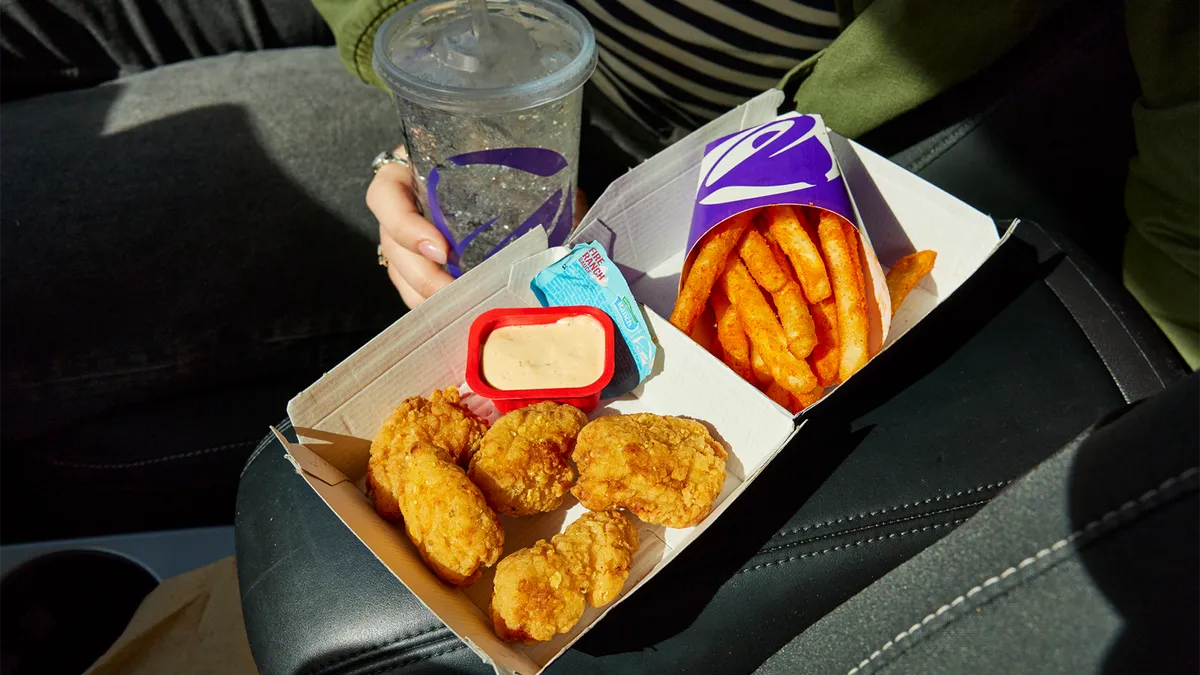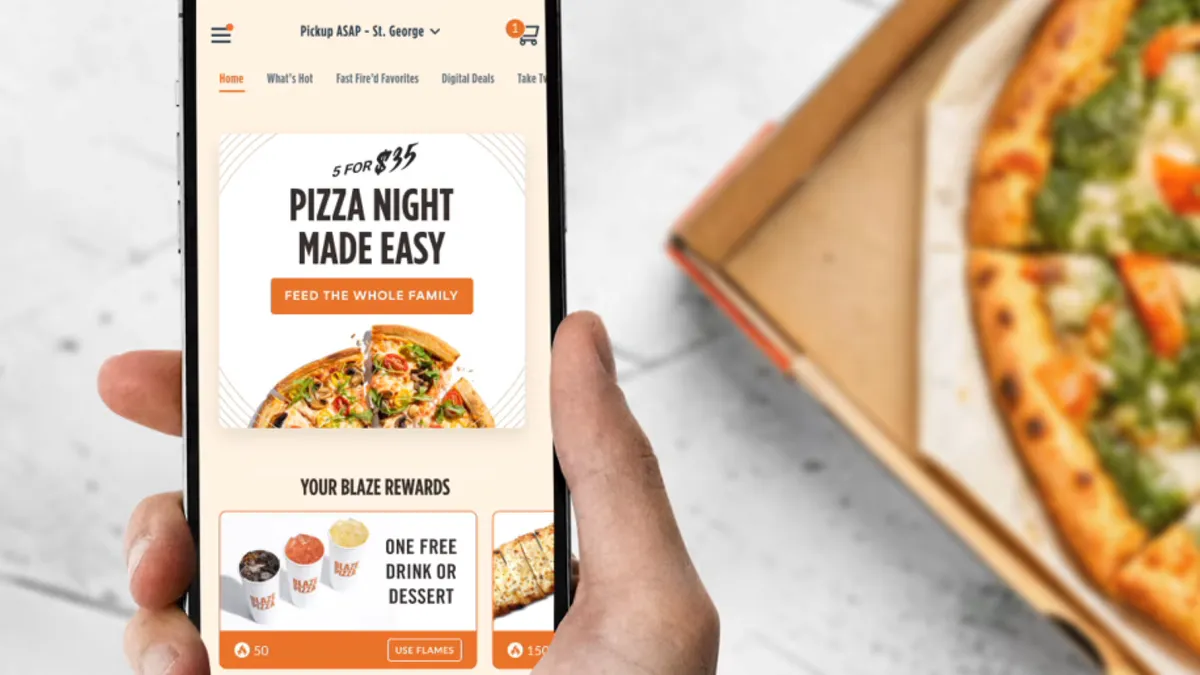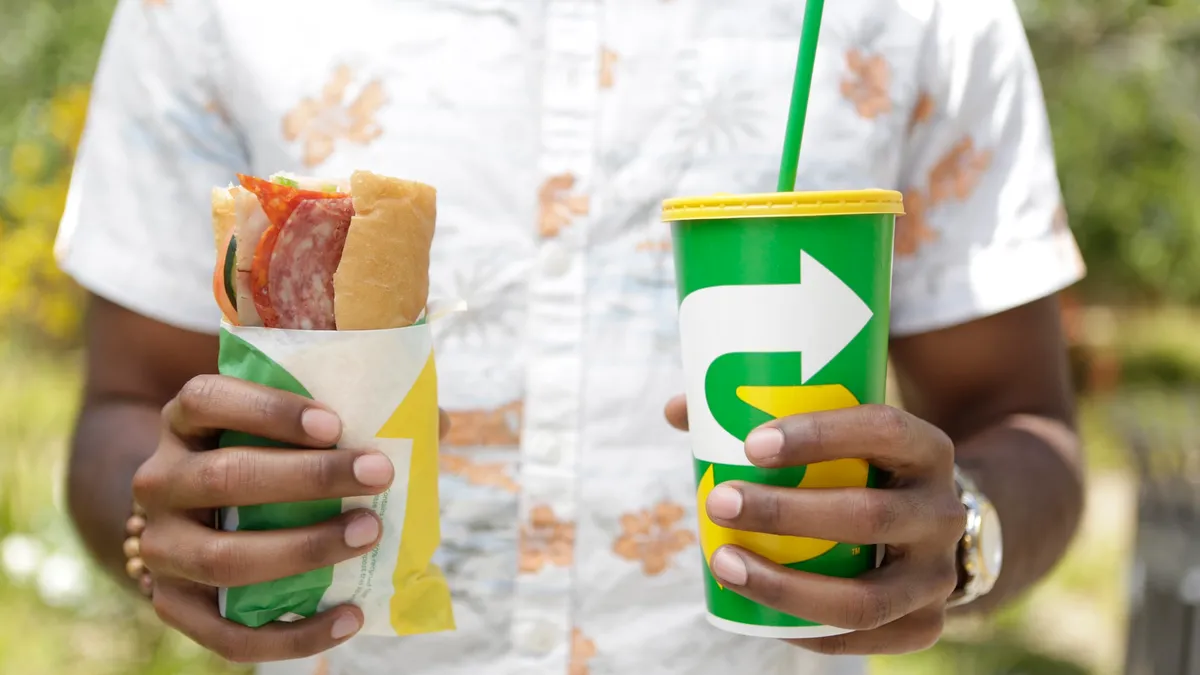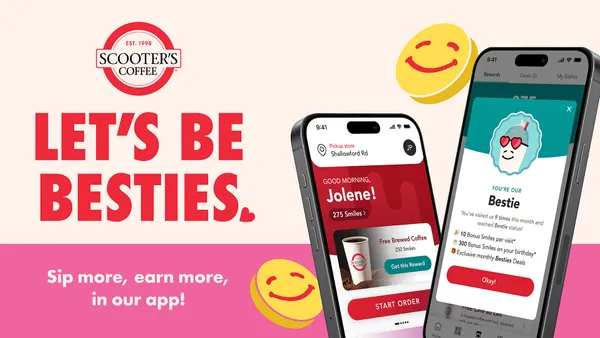Scrolling through third-party food delivery apps offers scores of local spots, familiar chains and — increasingly — generically named companies offering food wings, burgers, pizza and more. Many of these latter offerings are virtual brands and some are operated by the same brick-and-mortar restaurants that not too long ago called foul on platforms like Uber Eats and DoorDash for their fees, but are now working hard to reach at-home diners amid a drop in demand for on-premise dining.
While some smaller restaurants have pivoted into virtual brands, a number are coming from major players in the casual dining space as they pivot to address the continued effects of the pandemic on restaurant dining. Last month, Applebee's followed up the 2020 launch of its Neighborhood Wings concept with a Cheetos-inspired menu under the name Cosmic Wings. Bloomin' Brands took its Tender Shake brand national, and Denny's announced plans for The Burger Den and The Melt Down brands. Perhaps most notably, Chili's parent Brinker International estimated the company's It's Just Wings brand will generate $150 million in annual sales.
"Part of why we're seeing a proliferation in virtual brands is that they are quick to market," said James Walker, senior vice president of restaurants at Nathan's Famous, which operates Wings of New York, a virtual chicken and waffles brand.
But speed should not be confused with ease.
"It takes actual investment to build awareness, and the brand needs to be focused on quality. That's no different than a brand that lives in brick-and-mortar," Walker said.
Marketing these brands — which operate either out of brick-and-mortar restaurants or through ghost kitchens — presents a unique challenge as consumer behaviors around off-premise dining persist, all while third-party platforms — and the restaurants on them — compete for diners.
The challenge is complicated by the fact that most virtual brands utilize third-party partners like Uber Eats, DoorDash and GrubHub to support discovery and order fulfillment. These platforms take double-digit commissions off orders and have come under fire from restaurants, drivers and diners alike, but are the easiest way to get to market and offer marketers access to customer data. For most restaurants, third-party platforms are a cost of doing business — for now.
"The challenges of marketing virtual brands is learning how to best leverage the third-party marketing space," Michael Breed, vice president of marketing at Brinker, said via email. "We've found that smart and targeted marketing — and relevant messaging — creates the best user experience."
Pros and cons of third-party
For its virtual brands, The Wing Experience and The Burger Experience, casual dining chain Smokey Bones focused on menu categories where it already had culinary competency, like wings and burgers, to avoid operational disruptions. At the same time, Smokey Bones sought to drive enough differentiation to ensure that revenue was incremental.
Marketing two different brand names provides the company with more opportunities to generate awareness, both on its own and in the third-party space.
"The third-party marketplace is akin to the digital food court where guests can, on their mobile device, have so many different restaurant options to choose from," said Smokey Bones CEO James O'Reilly. "From a marketing standpoint, the virtual brands provide more awareness of our culinary options under different brand names in the third party marketplace, which has extremely high levels of reach."
"If we step away from the take rate conversation, these platforms have better intel on these delivery customers... and we can leverage their intel about their customers."

James Walker
Senior vice president of restaurants, Nathan's Famous
Smokey Bones partnered with key providers in the third-party marketplace in 2019 and has invested in those partnerships, cross-promoting with them and often "aggressively" promoting on them. Smokey Bones studies analytics and insights to understand how to perform better and be more prominent on the platforms, which do not lend themselves to the traditional first-party marketing that the brand normally develops.
"The creative communication of the brand propositions in the third-party marketplace is very much subject to the way brands work with those partners and their creative guidelines which call for a very high degree of consistency," O'Reilly said.
While campaigns on third-party platforms are limited to food photography, menu descriptions, and pricing and deal information, those apps do offer marketers access to consumer data that they don't otherwise have, an increasing priority as the data privacy landscape tightens.
"Third-party platforms get a negative rap because of the take rate, but if we step away from the take rate conversation, these platforms have better intel on these delivery customers, in most cases, and we can leverage their intel about their customers," Walker said.
To take advantage of this data, marketers need to look to other marketing tactics to drive delivery sales for virtual brands on these crowded platforms. That could even take the form of a traditional tactic like direct mail. Walker provided the example of a postcard mailed within the delivery radius with a QR code that takes customers directly to the brand's page on a platform.
Moving forward as pandemic recedes
Third-party platforms have given virtual brands easy entry into the delivery space. But as these virtual brands build equity — and consumer behaviors around off-premise dining calcify — there may be an opportunity for marketers to go it alone. Brinker in January announced plans to make It's Just Wings menu items available for takeout at Chili's, circumventing third-party commission fees for delivery.
"We are committed to growing the brand long-term and see a lot of upside and potential. Chili's had a strong to-go, curbside and delivery foundation before the pandemic and it's continued to stay strong, therefore, we're excited to explore and show all the ways we can further grow our business through virtual brands," Brinker's Breed said.
For its part, Smokey Bones has partnered with an e-commerce provider to create its own platform for online ordering, delivery and carry-out service options for The Wing Experience, and is doing the same for The Burger Experience.
"We're so encouraged by the results that we're seeing with the virtual brands that we're investing outside of a third-party marketplace to develop our own direct-to-consumer platforms, and as we do that, we're gaining more traction with these brands," O'Reilly said.
"We're so encouraged by the results that we're seeing with the virtual brands that we're investing outside of a third-party marketplace to develop our own direct-to-consumer platforms."

James O'Reilly
CEO, Smokey Bones
With their own platforms, Smokey Bones' virtual brands can get a larger piece of the pie, and — perhaps just as importantly — gain first-party data.
"Any brand that has the wherewithal and resources to go one-to-one with customers, or can move to that ability, needs to," Nathan's Walker said. "The ability to own as much of the relationship with the customer as possible is critical, not just from a cost standpoint for marketing campaigns, but to learn to how to market to them best."
Whether continuing on third-party platforms or moving to owned ones, virtual brands seem poised to persist, even as the vaccination rollout continues and there is light at the end of the tunnel for on-premise dining. But not all virtual brands will be well-suited for the future.
"The virtual brands that I truly think are going to have life well beyond the current situation are those virtual brands that managements teams put heart and soul into creation in a strategic faction — not just opportunistic fashion," Walker said.



